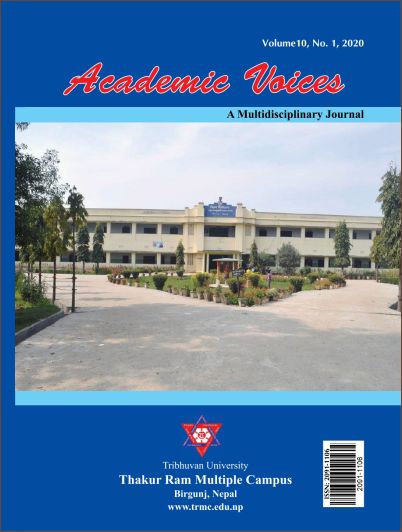Dynamics of Covid-19 Pandemic in Nepal: A Mathematical Perspective
DOI:
https://doi.org/10.3126/av.v10i1.74256Keywords:
compartmental model, basic reproduction number, numerical simulations, disease-free equilibrium, endemic equilibriumAbstract
In this paper, transmission dynamics of coronavirus disease (COVID-19) outbreak in Nepal is studied by using the SIR compartmental mathematical model. The total population in this model was sub-divided into three compartments, namely Susceptible S (t), Infected I (t) and Recovered R (t). The qualitative analysis of the model was done analytically. The qualitative behaviour of the model like conditions for positivity of solutions, invariant region of the solution, the existence of the equilibrium points of the model and their stability, and also sensitivity analysis of the were analysed. The model is analysed by deriving some important expressions such as basic reproduction ratio, disease-free and endemic equilibrium points. The study examines the applicability of the SIR model for the study of the COVID-19 pandemic and other similar communicable diseases. The main objective the study is to analyse and forecast transmission dynamics of the COVID-19 pandemic in Nepal for the future. The estimation of the parameters of the model is based upon data from January 20, January 2020 to July 28, 2020. The actual time-series data of the corona virus disease 2019 for Nepal seem to good fit the proposed SIR model. The findings suggest that the quick detection of cases, sufficient implementation of quarantine and public self-protection behaviour are the best measures to reduce the transmission rate of the COVID-19.
Downloads
Downloads
Published
How to Cite
Issue
Section
License
© Academic Voices: A multidisciplinary Journal
All rights reserved. No part of this journal may be reproduced in any form or by any electronic or mechanical means, including information storage and retrieval system, without permission in writing from the publisher/writers, except by a reviewer who may quote brief passages in a review.




